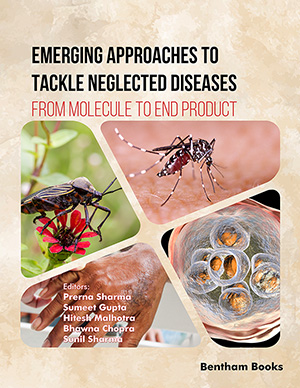
Abstract
Advancements in stem cell research have enabled the establishment of three-dimensional (3D) primary cell cultures, known as organoids. These culture systems follow the organization of an in vivo organ, as they enclose the different epithelial cell lines of which it is normally composed. The generation of these 3D cultures has bridged the gap between in vitro models, made up of two-dimensional (2D) cancer cell lines cultures, and in vivo animal models, with major differences regarding human diseases. Organoids are increasingly used as a model to study colonization of gastric mucosa by infectious agents and better understand host-microbe interactions and the molecular events that lead to infection, pathogen-epithelial cells interactions, and mechanisms of gastric mucosal injury. In this review, we will focus on the role of organoids as a tool to investigate molecular interactions of Helicobacter (H.) pylori and Epstein Barr Virus (EBV) and gastric mucosa and how these infections, which affect ≈ 45 % of the world population, might progress to gastric cancer, a highly prevalent cancer and the third leading cause of cancer death.
Keywords: Organoids, Helicobacter pylori, EBV, gastric cancer, infection, host-pathogen interaction.
Recent Advances in Inflammation & Allergy Drug Discovery
Title:Organoids as Ex Vivo Culture System to Investigate Infection-host Interaction in Gastric Pre-carcinogenesis
Volume: 15 Issue: 2
Author(s): Cristina Di Giorgio*, Rosalinda Roselli, Michele Biagioli, Silvia Marchianò, Eleonora Distrutti, Martina Bordoni, Annibale Donini and Stefano Fiorucci
Affiliation:
- Dipartimento di Medicina e Chirurgia, Università di Perugia, Perugia, Italy
Keywords: Organoids, Helicobacter pylori, EBV, gastric cancer, infection, host-pathogen interaction.
Abstract: Advancements in stem cell research have enabled the establishment of three-dimensional (3D) primary cell cultures, known as organoids. These culture systems follow the organization of an in vivo organ, as they enclose the different epithelial cell lines of which it is normally composed. The generation of these 3D cultures has bridged the gap between in vitro models, made up of two-dimensional (2D) cancer cell lines cultures, and in vivo animal models, with major differences regarding human diseases. Organoids are increasingly used as a model to study colonization of gastric mucosa by infectious agents and better understand host-microbe interactions and the molecular events that lead to infection, pathogen-epithelial cells interactions, and mechanisms of gastric mucosal injury. In this review, we will focus on the role of organoids as a tool to investigate molecular interactions of Helicobacter (H.) pylori and Epstein Barr Virus (EBV) and gastric mucosa and how these infections, which affect ≈ 45 % of the world population, might progress to gastric cancer, a highly prevalent cancer and the third leading cause of cancer death.
Export Options
About this article
Cite this article as:
Di Giorgio Cristina*, Roselli Rosalinda, Biagioli Michele, Marchianò Silvia, Distrutti Eleonora, Bordoni Martina, Donini Annibale and Fiorucci Stefano, Organoids as Ex Vivo Culture System to Investigate Infection-host Interaction in Gastric Pre-carcinogenesis, Recent Advances in Inflammation & Allergy Drug Discovery 2021; 15 (2) . https://dx.doi.org/10.2174/2772270816666220105123702
| DOI https://dx.doi.org/10.2174/2772270816666220105123702 |
Print ISSN 2772-2708 |
| Publisher Name Bentham Science Publisher |
Online ISSN 2772-2716 |
Call for Papers in Thematic Issues
Diabetic Inflammatory Mechanism and Drug Repositioning
The exploration of Diabetic Inflammatory Mechanism and Drug Repositioning encompasses a comprehensive understanding of the intricate molecular pathways that underlie the inflammatory processes associated with diabetes. This multifaceted issue necessitates an in-depth examination of specific inflammatory pathways, including the role of cytokines, oxidative stress, and adipokines in the development and ...read more
 46
46
- Author Guidelines
- Graphical Abstracts
- Fabricating and Stating False Information
- Research Misconduct
- Post Publication Discussions and Corrections
- Publishing Ethics and Rectitude
- Increase Visibility of Your Article
- Archiving Policies
- Peer Review Workflow
- Order Your Article Before Print
- Promote Your Article
- Manuscript Transfer Facility
- Editorial Policies
- Allegations from Whistleblowers
- Announcements
Related Articles
-
Optimizing Contrast Effect in T1-Weighted Magnetic Resonance Imaging of Gd2O3-Based Nano-Agent via Dopamine Chelation
Neuroscience and Biomedical Engineering (Discontinued) Antioxidant Therapy in Alzheimers Disease: Theory and Practice
Mini-Reviews in Medicinal Chemistry Immunobiology of Antigen-Specific Immunoglobulin Free Light Chains in Chronic Inflammatory Diseases
Current Pharmaceutical Design Specific Targeting of Zinc Transporter LIV-1 with Immunocytokine Containing Anti-LIV-1 VHH and Human IL-2 and Evaluation of its <i>In vitro</i> Antitumor Activity
Current Pharmaceutical Design Endothelial Microparticles: Mediators or Markers of Endothelial Cell Dysfunction?
Current Hypertension Reviews Dendrimers: Nanosized Multifunctional Platform for Drug Delivery
Drug Delivery Letters Drug Transport Across the Blood-Brain Barrier and the Impact of Breast Cancer Resistance Protein (ABCG2)
Current Topics in Medicinal Chemistry Chelating Agents for the Treatment of Systemic Iron Overload
Current Medicinal Chemistry Resveratrol as a Protective Molecule for Neuroinflammation: A Review of Mechanisms
Current Pharmaceutical Biotechnology Clinical Trials for Acute Kidney Injury: Design Challenges and Possible Solutions
Current Drug Targets Recent Scientific Advances Towards the Development of Tendon Healing Strategies
Current Tissue Engineering (Discontinued) Synthesis of β-Amino Carbonyl 6-(Aminomethyl)- and 6-(Hydroxymethyl)pyrazolopyrimidines for DPP-4 Inhibition Study
Current Medicinal Chemistry Molecular Aspects of Melatonin Treatment in Tinnitus: A Review
Current Drug Targets The Chemistry and Biology of the Bryostatins: Potential PKC Inhibitors in Clinical Development
Current Medicinal Chemistry Synthesis of Porphyrin, Chlorin and Phthalocyanine Derivatives by Azide-Alkyne Click Chemistry
Current Medicinal Chemistry Could Growth Factor-Mediated Extracellular Matrix Deposition and Degradation Offer the Ground for Directed Pharmacological Targeting in Fibrosarcoma?
Current Medicinal Chemistry Development of Liposomes and Pseudovirions with Fusion Activity for Efficient Gene Delivery
Current Gene Therapy Methods to Measure Target Site Penetration of Antibiotics in Critically Ill Patients
Current Clinical Pharmacology Further Vitamin D Analogs
Current Vascular Pharmacology Cardiovascular Effects of Micromeria graeca (L.) Benth. ex Rchb in Normotensive and Hypertensive Rats
Endocrine, Metabolic & Immune Disorders - Drug Targets




























